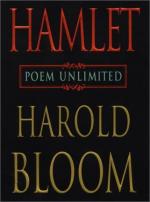|
This section contains 4,110 words (approx. 14 pages at 300 words per page) |

|
SOURCE: "Stevens at the Crossing," in The New York Times Book Review, September 15, 1977, pp. 39-42.
In the following review of Wallace Stevens: The Poems of Our Climate, Donoghue provides a brief synopsis of Bloom's theory of poetry and how it applies to Wallace Stevens's poetry.
Harold Bloom's new book is not only an interpretation of Wallace Stevens's major poems but a sustained application of the theory of literary history which he first outlined in The Anxiety of Influence (1973). It may be useful to recite the theory before considering its bearing upon Stevens.
Bloom's first books were powerful but relatively straightforward interpretations of the major Romantic poets. Shelley's Mythmaking (1959), The Visionary Company (1961), and Blake's Apocalypse (1963) were written on the understanding that the central act of Romanticism is the transformation of natural life into human life. The necessary mode of this transformation is "myth-making, the confrontation of life by life...
|
This section contains 4,110 words (approx. 14 pages at 300 words per page) |

|


